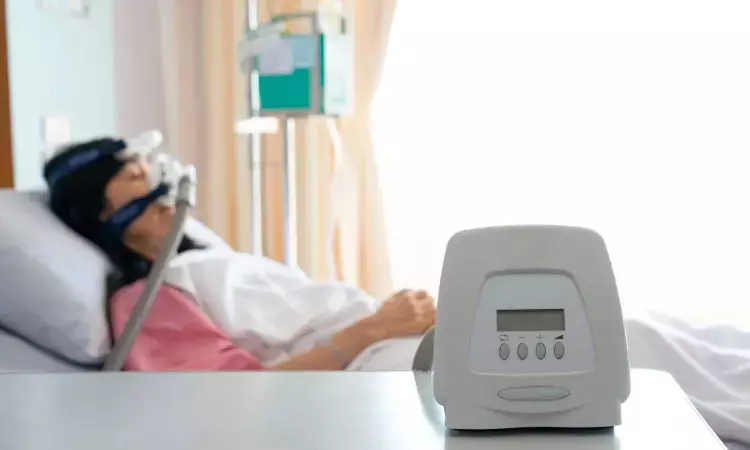- Home
- Medical news & Guidelines
- Anesthesiology
- Cardiology and CTVS
- Critical Care
- Dentistry
- Dermatology
- Diabetes and Endocrinology
- ENT
- Gastroenterology
- Medicine
- Nephrology
- Neurology
- Obstretics-Gynaecology
- Oncology
- Ophthalmology
- Orthopaedics
- Pediatrics-Neonatology
- Psychiatry
- Pulmonology
- Radiology
- Surgery
- Urology
- Laboratory Medicine
- Diet
- Nursing
- Paramedical
- Physiotherapy
- Health news
- Fact Check
- Bone Health Fact Check
- Brain Health Fact Check
- Cancer Related Fact Check
- Child Care Fact Check
- Dental and oral health fact check
- Diabetes and metabolic health fact check
- Diet and Nutrition Fact Check
- Eye and ENT Care Fact Check
- Fitness fact check
- Gut health fact check
- Heart health fact check
- Kidney health fact check
- Medical education fact check
- Men's health fact check
- Respiratory fact check
- Skin and hair care fact check
- Vaccine and Immunization fact check
- Women's health fact check
- AYUSH
- State News
- Andaman and Nicobar Islands
- Andhra Pradesh
- Arunachal Pradesh
- Assam
- Bihar
- Chandigarh
- Chattisgarh
- Dadra and Nagar Haveli
- Daman and Diu
- Delhi
- Goa
- Gujarat
- Haryana
- Himachal Pradesh
- Jammu & Kashmir
- Jharkhand
- Karnataka
- Kerala
- Ladakh
- Lakshadweep
- Madhya Pradesh
- Maharashtra
- Manipur
- Meghalaya
- Mizoram
- Nagaland
- Odisha
- Puducherry
- Punjab
- Rajasthan
- Sikkim
- Tamil Nadu
- Telangana
- Tripura
- Uttar Pradesh
- Uttrakhand
- West Bengal
- Medical Education
- Industry
Pulse Wave Amplitude Drops index may predict CV Risk among Sleep Apnea Patients

Obstructive sleep apnea (OSA) is a common sleep disorder that affects millions of individuals worldwide. While it is known that OSA can increase the risk of cardiovascular problems, determining which patients with OSA are at the highest risk has remained a challenge. A recent study published in the American Journal Of Respiratory And Critical Care Medicine has identified a potential biomarker, known as pulse wave amplitude drops (PWADs), that may help predict cardiovascular risk in individuals with OSA.
The study was conducted by Geoffroy Solelhac and team across three prospective cohorts including HypnoLaus, the Pays-de-la-Loire Sleep Cohort (PLSC), and the Impact of Sleep Apnea syndrome in the evolution of Acute Coronary syndrome. Effect of intervention with CPAP (ISAACC), investigated the value of PWADs as a marker of cardiovascular risk in OSA patients. PWADs were derived from pulse oximetry–based photoplethysmography signals, which reflect sympathetic activations and vasoreactivity.
The participants were categorized into subgroups based on the presence or absence of OSA and the median PWAD index. The primary outcome measured was the incidence of composite cardiovascular events. Cox models adjusted for cardiovascular risk factors were used to analyze the data.
● In the HypnoLaus cohort, patients with both a low PWAD index and OSA had a higher incidence of cardiovascular events compared to the group with a high PWAD index and OSA, as well as those without OSA (HR 2.16 [1.07–4.34], P = 0.031; and 2.35 [1.12–4.93], P = 0.024), respectively.
● Similarly, in the PLSC cohort, patients with a low PWAD index and OSA had a higher incidence of cardiovascular events compared to the high-PWAD and OSA group and the group without OSA (HR 1.36 [1.13–1.63], P = 0.001; and 1.44 [1.06–1.94], P = 0.019), respectively.
● In the ISAACC cohort, the untreated group with both a low PWAD index and OSA had a higher recurrence rate of cardiovascular events compared to the group without OSA (HR 2.03 [1.08–3.81], P = 0.028).
● In the PLSC and HypnoLaus cohorts, an increase of 10 events per hour in the continuous PWAD index was associated with a lower risk of incident cardiovascular events exclusively in patients with OSA (HR 0.85 [0.73–0.99], P = 0.031; and HR 0.91 [0.86–0.96], P < 0.001), respectively.
● However, this association was not significant in the group without OSA or in the ISAACC cohort.
These findings suggest that a low PWAD index, which reflects poor autonomic and vascular reactivity, is independently associated with a higher cardiovascular risk in patients with OSA. The results highlight the potential of PWADs as a biomarker for identifying OSA patients who may be at increased risk of cardiovascular events.
Further research is needed to validate these findings and to explore the underlying mechanisms linking PWADs to cardiovascular risk in OSA. If confirmed, this biomarker could help improve risk stratification and guide personalized treatment approaches for individuals with OSA, ultimately leading to better cardiovascular outcomes in this population.
Reference:
Solelhac, G., Sánchez-de-la-Torre, M., Blanchard, M., Berger, M., Hirotsu, C., Imler, T., Sánchez-de-la-Torre, A., Haba-Rubio, J., Marchi, N. A., Bayon, V., Bailly, S., Goupil, F., Waeber, A., Heiniger, G., Pigeanne, T., Gracia-Lavedan, E., Zapater, A., Abad, J., Ordax, E., ... Heinzer, R. (2023). Pulse wave amplitude drops index: A biomarker of cardiovascular risk in obstructive sleep apnea. American Journal of Respiratory and Critical Care Medicine, 207(12), 1620–1632. https://doi.org/10.1164/rccm.202206-1223OC
Dr Kamal Kant Kohli-MBBS, DTCD- a chest specialist with more than 30 years of practice and a flair for writing clinical articles, Dr Kamal Kant Kohli joined Medical Dialogues as a Chief Editor of Medical News. Besides writing articles, as an editor, he proofreads and verifies all the medical content published on Medical Dialogues including those coming from journals, studies,medical conferences,guidelines etc. Email: drkohli@medicaldialogues.in. Contact no. 011-43720751


